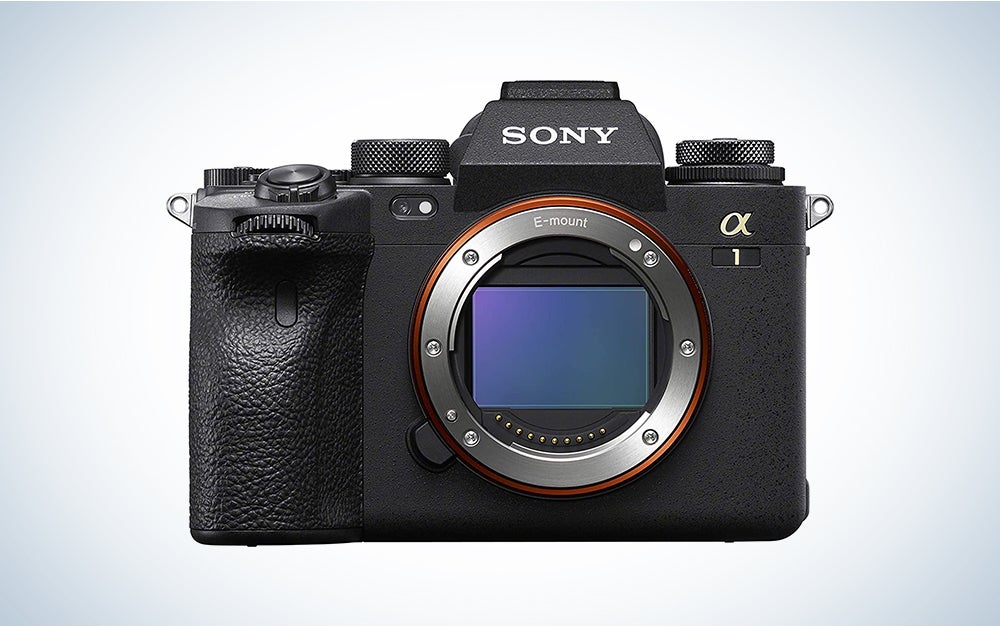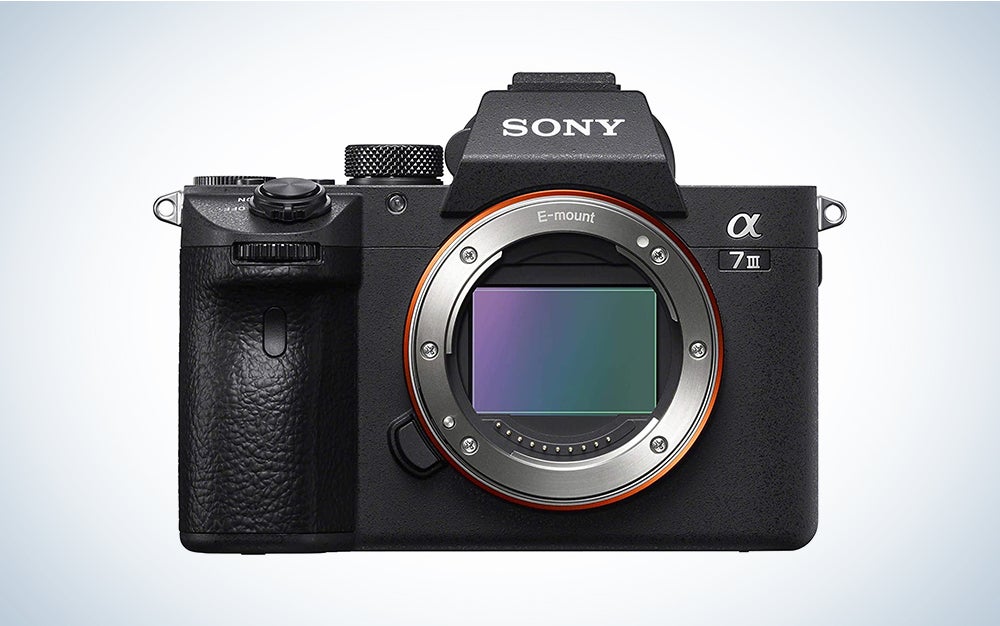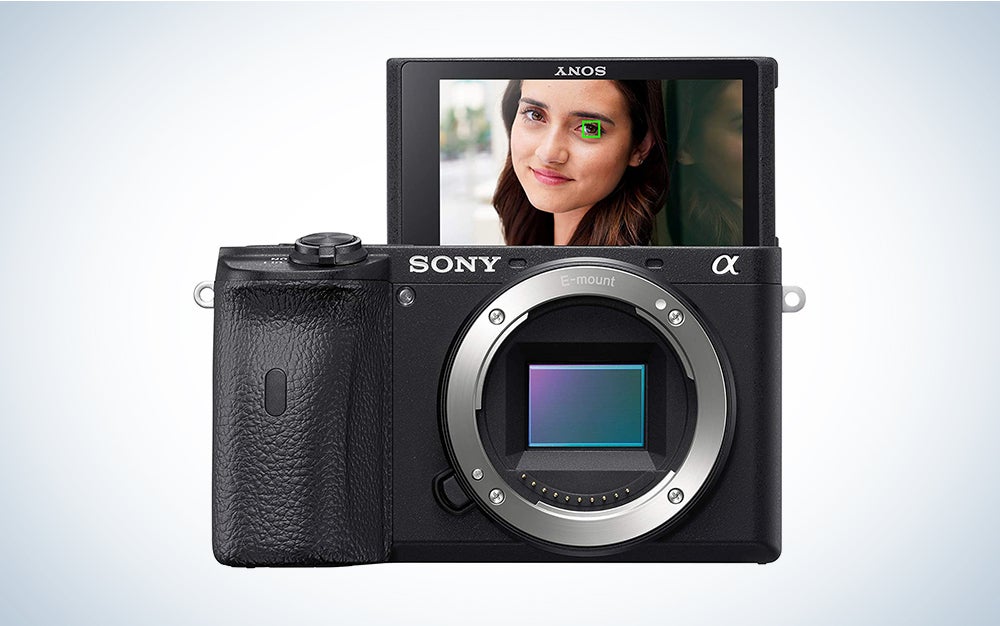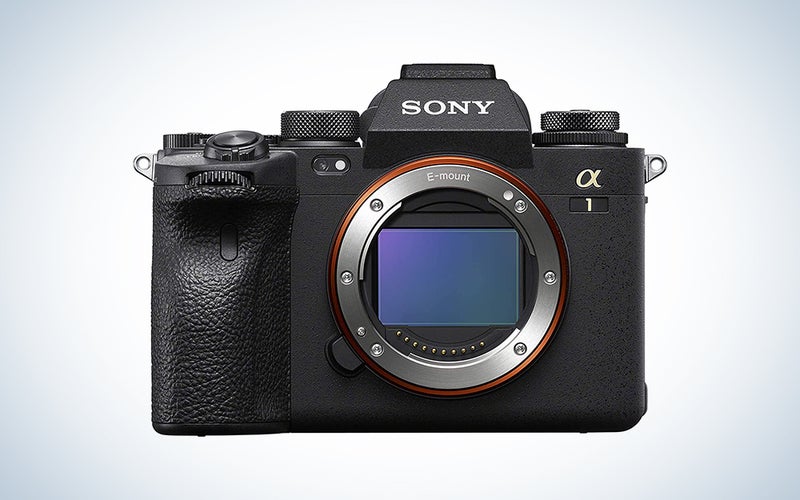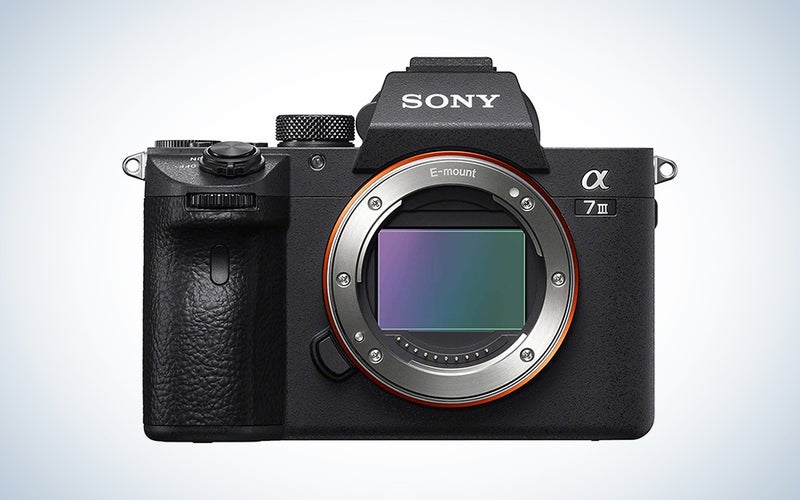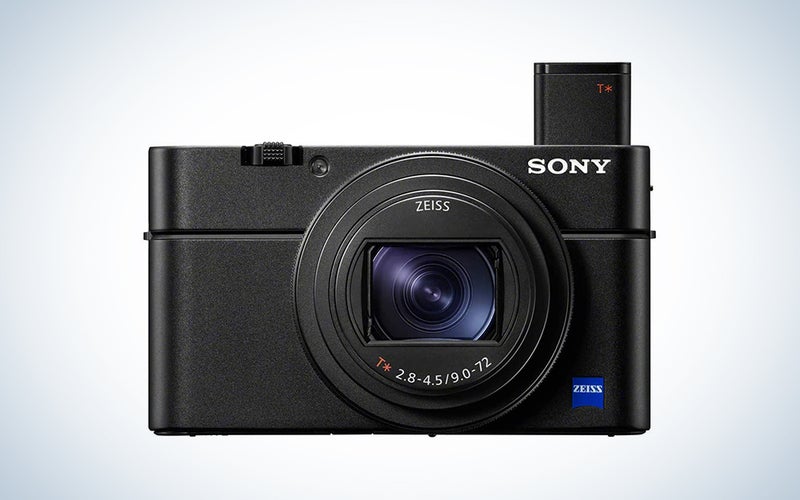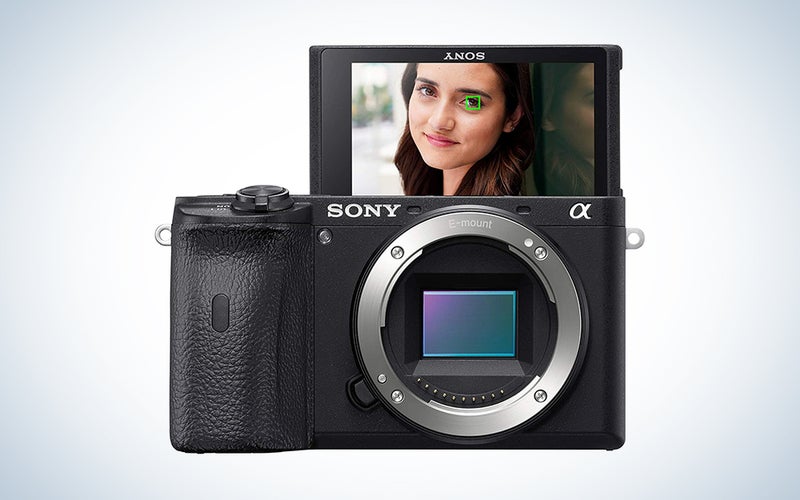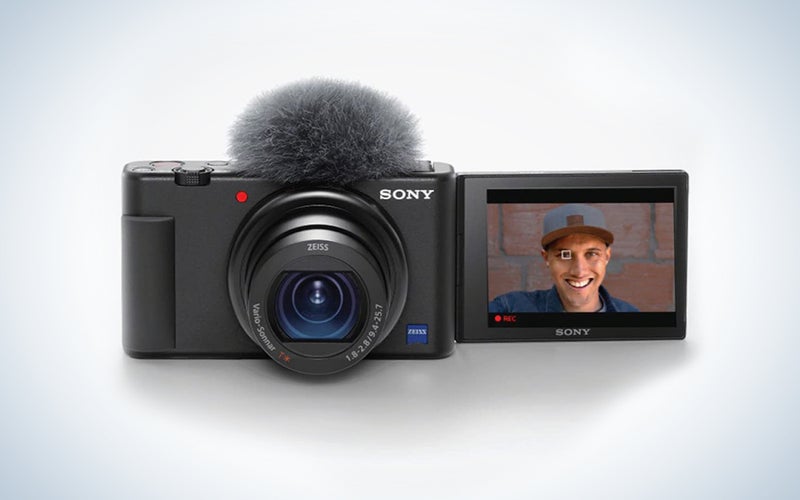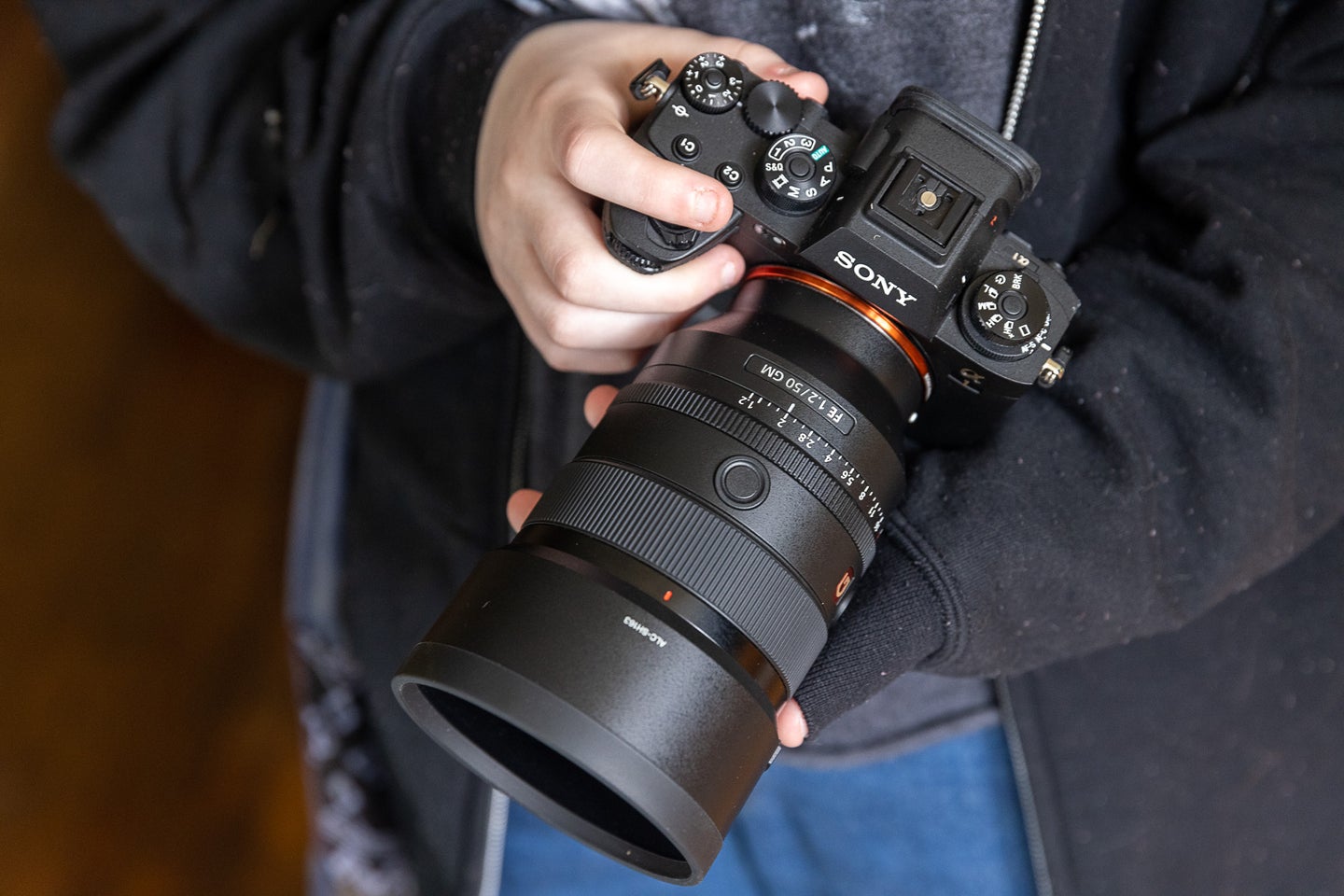
We may earn revenue from the products available on this page and participate in affiliate programs. Learn more ›
Take a trip back to 2010 and Sony’s digital camera reputation was a lot different. The electronics giant had a successful line of compact cameras, but it was just starting its run in the mirrorless camera market. Now, things look a lot different. Sony has become one of the most dominant manufacturers in the camera business. Its current lineup contains everything from action cameras and compacts to super-pro-level mirrorless cameras with industry-leading sensors. All that choice can make picking the best Sony camera a challenge.
Luckily, Sony’s camera lineup has a logical progression. And as long as you know what you’re looking for, there’s likely a body or camera in the mix that will suit your needs. Here, we’ll run down some of the most important things to consider when shopping for the election of Sony digital cameras.
- Best overall: Sony A1
- Best for upgrading to full-frame: Sony A7 III
- Best compact camera: Sony RX100 VII
- Best for advanced amateurs: Sony A6600
- Best for aspiring content creators: Sony ZV-1
Understanding the Sony digital camera product lines
Like with other manufacturers, sony breaks up its product line into segments to make it simpler to navigate. Even with the different product lines, however, things can still get a little confusing. Before you know what the best Sony camera is for you, it helps to understand the different lines. Here’s a quick overview of the different types of cameras Sony currently offers.
Sony compact cameras
Compact cameras encompass every camera with an attached lens that you can’t switch out. A decade ago, Sony used to announce more than a dozen different models in this category every year before smartphone cameras ate away at the segment’s viability. Now, Sony still offers a solid selection of attached-lens compact cameras, but they tend to skew toward the higher end models that can offer features smartphone shooters can’t That includes huge zoom lenses in the RX10 line, larger sensors in the RX100 line, and the wonderfully aspirational $3,300, full-frame RX-1R M2.
Sony Mirrorless APS-C mirrorless cameras
This is where the mirrorless game started for Sony. These enthusiast-grade cameras have vaguely rangefinder-style bodies and offer sensors that are roughly 75 percent the size of a full-frame chip. They typically cost considerably less than their full-frame siblings but offer impressive and comprehensive feature sets. They use the same E-mount lenses as the A-series camera (more on those in a moment), but they also have access to APS-C-specific lenses which often come in at a lower price than their full-frame counterparts.
Sony Alpha full-frame mirrorless cameras
These full-frame, interchangeable-lens cameras represent the highest echelon of Sony gear. They typically offer a more DSLR-style body with an eye-level finder where a prism would typically sit. The company does offer one rangefinder-style full-frame body in the quirky A7C. This line is where you’ll find Sony’s most advanced and pro-grade cameras. They require full-frame e-mount lenses, including high-end glass like the G Master series, which is the top of the heap.
A note about Sony A-mount DSLRs
If you haven’t looked closely at Sony’s lineup lately, you may have missed the fact that Sony has stopped selling its A-mount DSLR cameras. Sony used a somewhat unique system for its DSLRs. They employed a translucent mirror that didn’t flip up and down every time you took a picture. As a result, you could get some of the benefits you’d expect out of a mirrorless camera in a true DSLR. They were innovative, excellent, and generally very cool. They couldn’t keep up with their mirrorless counterparts when it comes to usability, however.
Choosing your lenses
If you’re buying a Sony mirrorless camera, you’re going to want to buy E-mount lenses. If you see A-mount glass out there, it’s built for Sony’s now-defunct DSLRs. You can use A-mount lenses on mirrorless cameras with help of an adapter. You should only do that if you already have A-mount glass, though. Native lenses will work much better and more reliably.
If you want a more thorough explanation of lens compatibility, you can check out this larger article that explains the different offerings.
Get a camera you can grow into
If you’re planning to really grow your photographic skills, you’ll want a camera that can grow with you. Similarly, if you’re already an advanced shooter, you don’t want to buy a body that will hold you back with its lack of features. Looking across the Sony full-frame lineup, you’ll find a number of cameras that serve specific needs.
The A7R IV boasts a massive 61-megapixel sensor with 15 stops of dynamic range which is great for studio, portrait, and commercial shooters. On the other side of the coin, the A9 II shoots 24.2-megapixel photos, but excels at sports with its advanced AF system and 20 fps capture speed. The $3,500 A7S III has an even lower megapixel count at just 12 mp. It excels at super low-light and video shooting.
Best overall: Sony A1
Sony
This $6,500 beast is the true alpha in Sony’s Alpha lineup. Its full-frame 50-megapixel sensor can crank out full-res images at up to 30 fps. That means you can take it into the studio and shoot high-res commercial work, then step out onto the sidelines at a football game and blast away at a super-high framerate to capture fast action. It’s not just the best Sony camera at the moment, it’s easily one of the best cameras you can buy right now period.
Getting started with full-frame
While the A1 can meet the needs of just about every type of photographer, even at the highest levels, some of us don’t have the need–or the budget–for that kind of purchase. You don’t have to hop into the full-frame series at the deep end, however. Sony’s original A7 line debuted back in 2013 as the first full-frame mirrorless camera to hit the market. It was a straight-down-the-middle body that offered solid performance across the board. Sony has continued that tradition with each A7 update.
Best for upgrading to full-frame: Sony A7 III
Sony
While the A1 is overkill for most photographers, the A7 III provides an excellent mix of features that should appeal to a very wide group of people. Sony has refined to the 24.2-megapixel sensor over the years to get better image quality and low-light performance out of it. It can shoot up to 10 fps and offers some of Sony’s most advanced autofocus tracking features. This is a great entry point into full-frame mirrorless that will let you build on it for years to come.
Get all the features in a smaller body
Mirrorless cameras are great because they offer lots of options and features. But, if you’re never planning to switch lenses, why pay for the privilege? Modern compact cameras have really stepped up their performance in recent years to occupy the high-end space in which smartphones still can’t compete. Sony’s RX10 IV offers many of the same features you’ll find in a mirrorless camera, including a 20.1-megapixel sensor and super-fast autofocus with 315 AF points covering 65 percent of the sensor.
Best compact camera: Sony RX100 VII
Sony
When it comes to true compact cameras, the RX100 VII is still probably the all-around best Sony camera you can get. Its one-inch sensor pairs with a 24-200mm f/2.8-4.5 Zeiss lens to produce image quality that smartphone cameras can’t touch. It also has autofocus tracking and a pop-up eye-level viewfinder if you don’t want to hold the camera out in front of you to shoot. If you can’t afford the most recent model, you can go back a few generations and get a still-great little camera for less money.
You don’t necessarily need to go full-frame
As the price of full-frame cameras like Sony’s A7 line have come down, APS-C cameras with their smaller sensors have lost some momentum. This is where mirrorless started for Sony, though, and there’s still a lot of life left at this level.
Some photographers prefer the rangefinder-style bodies. The off-set viewfinders don’t stick up out of the camera and the bodies are generally compact and easy to carry. Those smaller sensors also give these cameras access to more compact, cheaper APS-C lenses, which still offer awesome image quality.
Best for advanced amateurs: Sony A6600
Sony
Sony’s flagship APS-C camera has a truly impressive spec sheet. It houses Sony’s familiar 24.2-megapixel sensor, but promises the “world’s fastest” autofocus system. While your real-world mileage may vary on the claim, you will get excellent AF tracking as well as 5-axis image stabilization built into the body to combat handshake.
If you can’t swing the A6600’s price tag, Sony also still sells some older versions that can still hang with the best of them. The A6400, for example, will cost you less than $900 on the current market and it offers many of the same features you’ll find in the A6600.
Don’t neglect the specialty cameras
If you want to shoot hardcore pro video with Sony cameras, then the company has a whole line of them including the FX3 and the FX6V. Those cameras, however, require a heavy-duty budget to go along with your production. Almost any of the Sony mirrorless cameras–and even the compacts–will shoot excellent video. But, there’s a camera in the Sony line made specifically for content creators.
Best for aspiring content creators: Sony ZV-1
Sony
A one-inch sensor sits behind a super-fast 24-70mm f/1.8-f/2.8 attached zoom lens. That’s a great zoom range for covering a wide variety of shooting situations. The 3-inch LCD screen flips all the way forward so you can see what your shot looks like even when you’re pointing the camera at yourself. You can attach a microphone with a 3.5mm jack, but the built-in mic offers a wind guard to cut down on atmospheric noise if you don’t want to add extra gear.
FAQs
Q: Which Sony camera is best?
Without more context than this, you can’t beat the Sony A1. It’s one of—if not the—best mirrorless cameras on the market at the moment. Super-fast 30 fps capture from a 50-megapixel sensor makes this beast the top of the heap.
Q: Which is the best Sony DSLR camera?
Unfortunately, Sony recently stopped producing its A-series DSLR cameras. Now, the company’s focus lies squarely on the E-mount mirrorless cameras. You can still use some of those older A-mount lenses on mirrorless bodies if you have an adapter.
Q: What is the best Sony Cyber-Shot camera?
For all-around use, the Sony RX-100 VII takes the crown. Its mix of versatile zoom range and high image quality makes it great in just about every situation. If you want to get wild with it, though, I might recommend the RX1R II. It has a full-frame sensor and a fixed 35mm f/2 Zeiss lens. Truly high-end stuff in a small package.
A final word about finding the best Sony cameras
Sony has a ton of fantastic cameras to offer. They cover just about every specific need different photographers and videographers could ask for. While finding the best Sony camera for you may take some time, you’ll end up with a solid base on which you can build your gear kit over the years.
The post Best Sony cameras for any photographer appeared first on Popular Photography.
